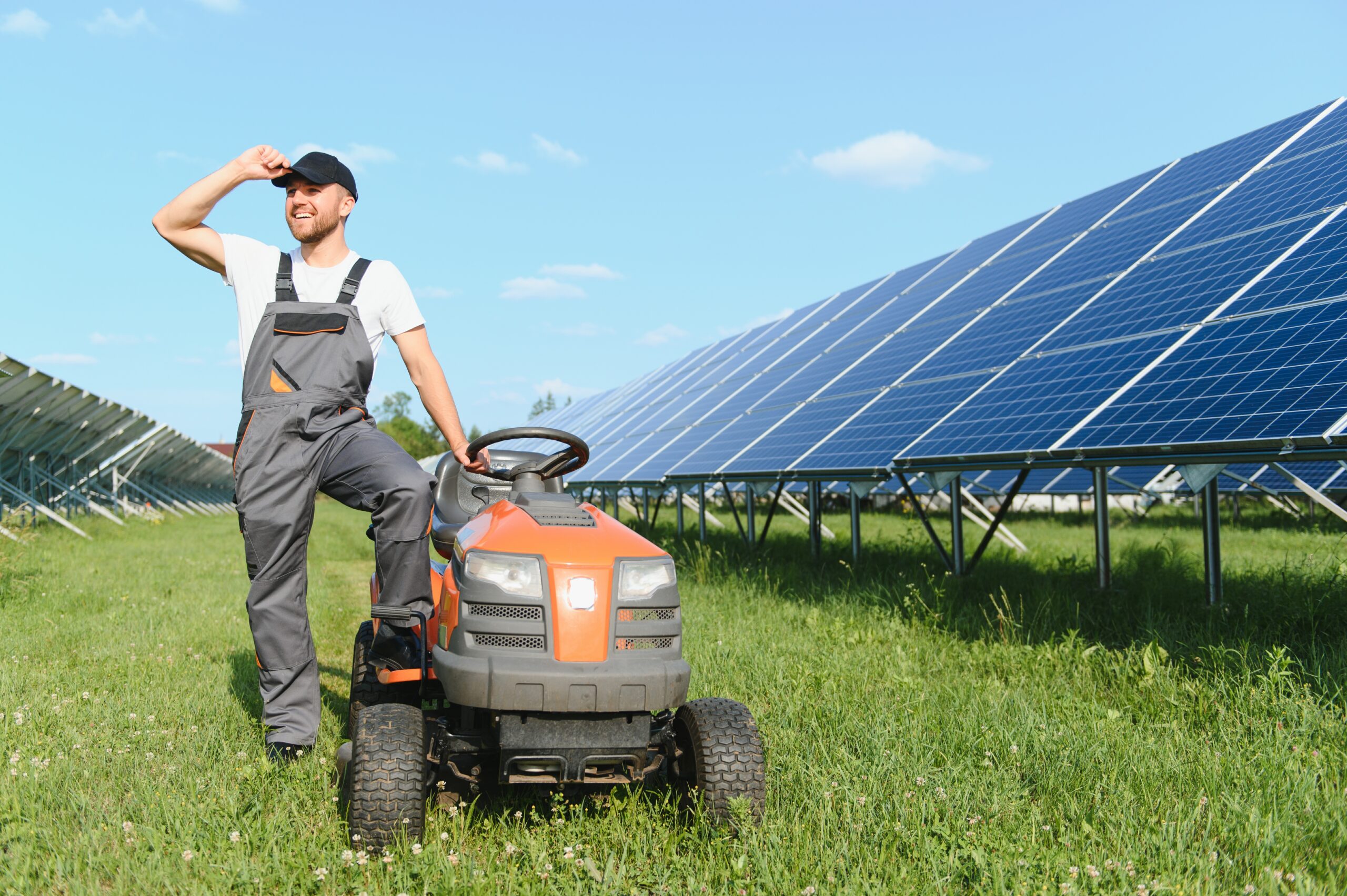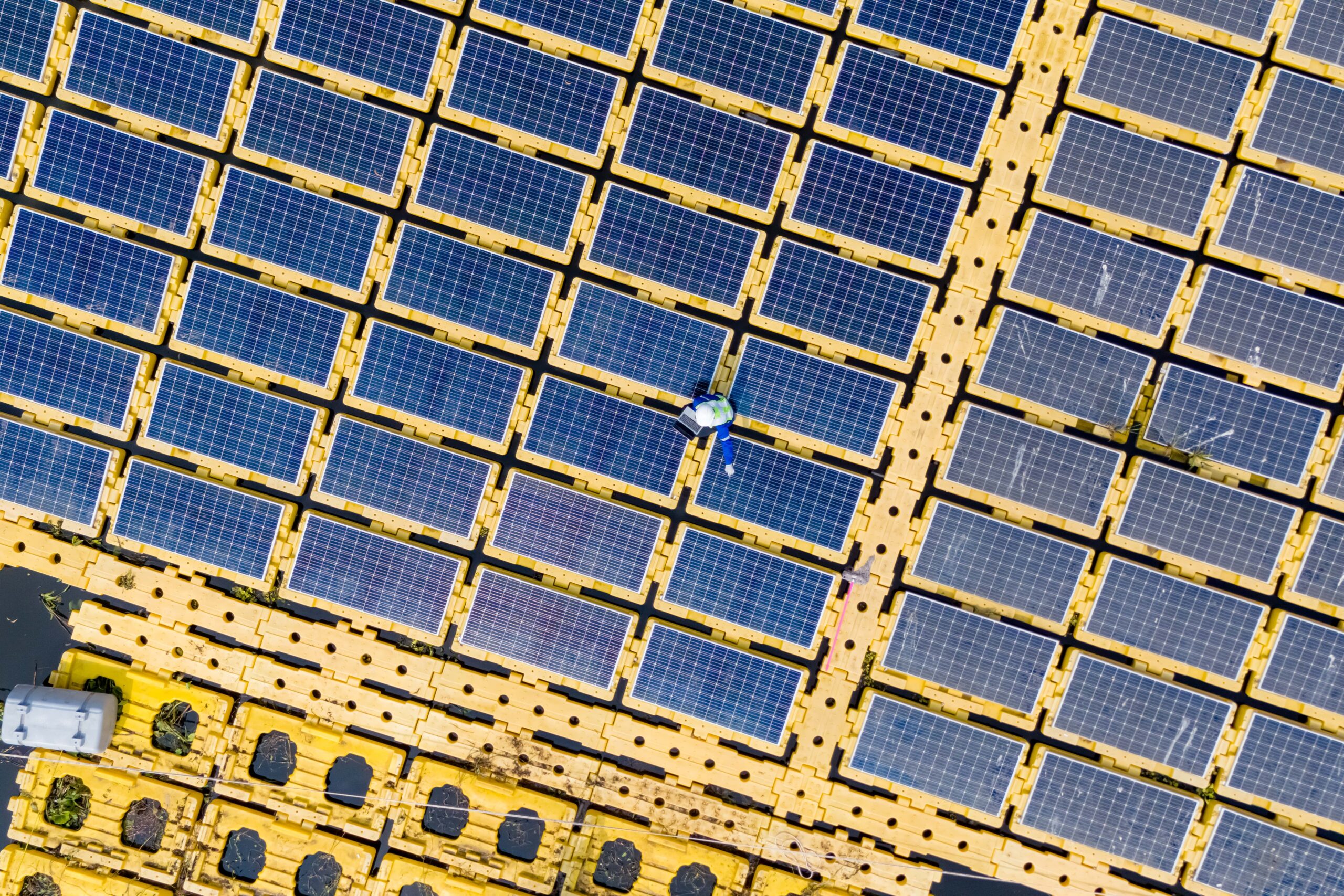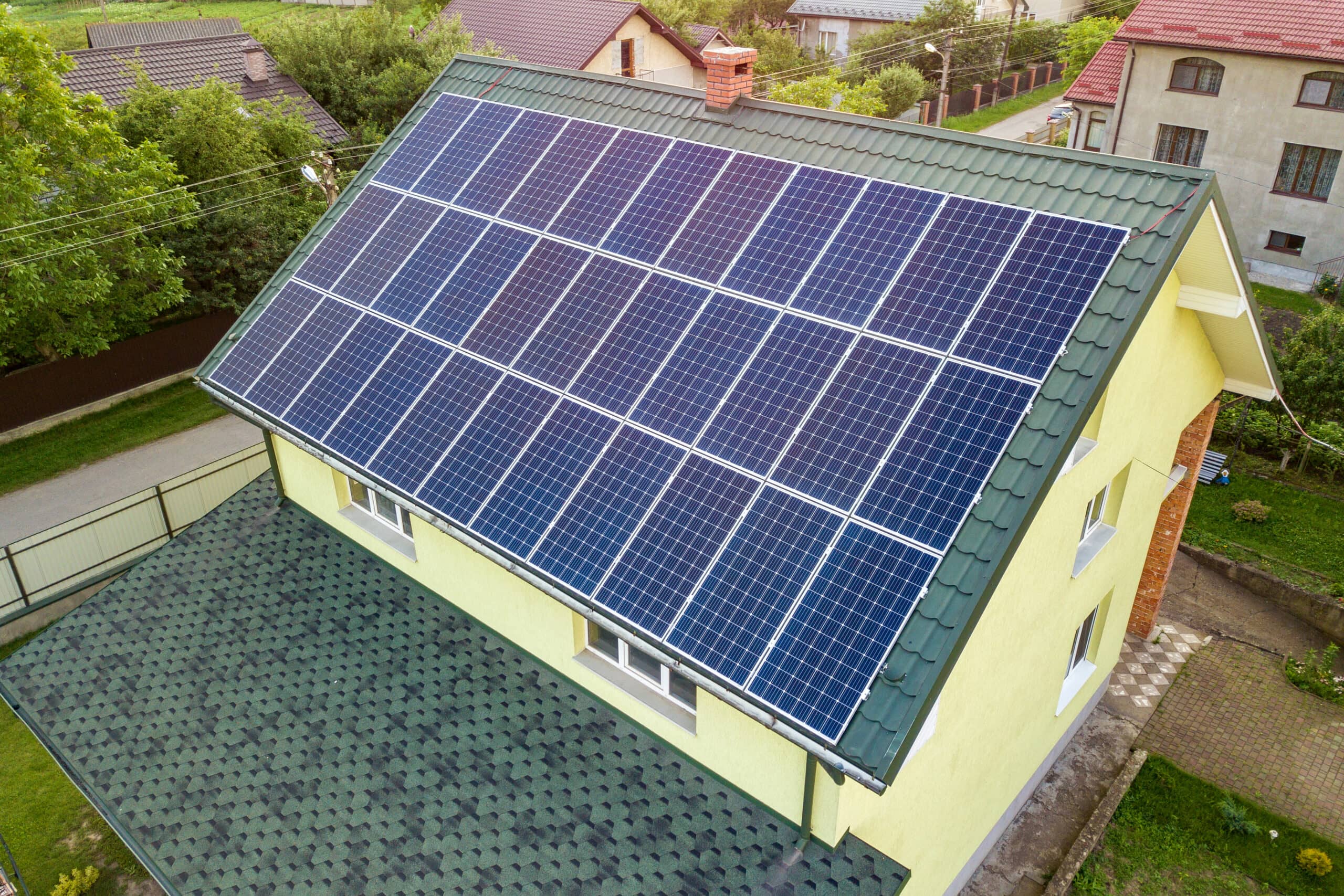In today’s world, energy efficiency plays a crucial role in various sectors, including the agricultural industry. Efficient energy use helps conserve valuable resources, reduces farmers’ costs, and promotes sustainable practices. In this article, we’ll explore how solar energy emerges as a more efficient alternative for irrigation in Agriculture (farming). Solar energy offers numerous benefits by harnessing the sun’s power, such as reduced reliance on traditional energy sources and lower operational costs. Let’s dive in and discover the exciting potential of solar energy in revolutionizing irrigation practices!
Solar Energy For Irrigation Systems
Solar energy is harnessed to power irrigation systems through solar panels, also known as photovoltaic (PV) panels. These panels convert sunlight into electricity, which can then be utilized to run various components of an irrigation system.
Two types of solar-powered irrigation systems are primarily direct-coupled and battery-coupled. They are as follows:
Direct-Coupled Systems:
- Solar panels are directly connected to the irrigation pump in a direct-coupled system. This means that the pump operates only when sunlight is available. It’s a simple and cost-effective setup.
- Depending on the water source, these systems typically use a submersible pump or a surface pump. The pump is powered directly by solar panels, eliminating the need for batteries or other storage devices.
Battery-Coupled Systems:
- Battery-coupled systems incorporate energy storage to provide irrigation even when sunlight is unavailable. These systems are more versatile and can operate during cloudy days or at night.
- Solar panels charge a battery bank during the day, storing excess energy. This stored energy is then used to power the irrigation system when needed.
- The components of a battery-coupled system include solar panels, charge controllers to regulate battery charging, batteries for energy storage, inverters to convert stored DC energy into AC energy, and the irrigation pump itself.
It’s worth noting that the specific components and configurations of solar-powered irrigation systems may vary depending on the scale and requirements of the irrigation project. However, the underlying principle remains: harnessing solar energy to power irrigation systems efficiently and sustainably.
The Use Of Solar Energy In Sustainable Agriculture
Sustainable agriculture refers to a farming approach that aims to meet the needs of the present generation without compromising the ability of future generations to meet their needs. It focuses on practices that promote environmental stewardship, economic viability, and social responsibility.
Solar energy plays a pivotal role in sustainable agriculture by offering several key benefits:
Renewable and Clean Energy: Solar energy is a renewable resource, meaning it is continuously replenished by the sun. By harnessing this clean energy source, farmers can reduce their reliance on fossil fuels, which contribute to pollution and climate change.
Cost Savings: Solar-powered agricultural systems can significantly reduce farmers’ energy costs. With solar panels generating electricity, farmers can power irrigation systems, lighting, and other farming operations without relying on expensive electricity grids or diesel generators.
Increased Energy Independence: Solar energy provides farmers greater energy independence. By generating their electricity, farmers are less susceptible to fluctuations in energy prices and disruptions in the power supply. This stability enhances the overall resilience of their agricultural operations.
Environmental Benefits: Solar energy helps reduce greenhouse gas emissions and air pollution associated with traditional energy sources. By embracing solar power, farmers mitigate climate change and preserve the environment for future generations.
Water Conservation: Solar-powered irrigation systems can be designed to optimize water usage. By combining solar energy with efficient irrigation techniques like drip irrigation or precision sprinklers, farmers can minimize water waste and improve water resource management.
Long-Term Investment: Installing solar panels on agricultural land is a long-term investment that can provide returns for decades. As technology advances and the cost of solar systems decreases, the economic viability of solar energy in agriculture continues to improve.
Farmers can create a more sustainable and resilient farming system by integrating solar energy into agricultural practices. They contribute to environmental conservation, reduce operational costs, and enhance productivity and profitability.
Advantages Of Using Solar Energy In Irrigation
Cost-Effectiveness: Solar energy offers significant cost savings compared to traditional energy sources for irrigation. Once the solar panels are installed, the sunlight is free, meaning farmers can reduce or eliminate their reliance on expensive electricity or diesel fuel. This can lead to substantial long-term savings and improved financial viability for farmers.
Environmental Impact: Solar energy is a clean and renewable energy source, making it a more environmentally friendly option for irrigation. By harnessing the sun’s power, farmers can reduce their carbon footprint and decrease their reliance on fossil fuels, which contribute to air pollution and climate change. Solar energy helps protect the environment and preserve natural resources for future generations.
Reliability: Solar energy systems can be designed with battery storage, allowing farmers to store excess energy generated during the day for use during cloudy or nighttime conditions. This ensures a reliable and consistent power supply for irrigation even when the sun isn’t shining. Additionally, solar-powered irrigation systems can be designed to operate independently, reducing the risk of power outages or disruptions in the electrical grid.
Scalability: Solar energy systems can be easily scaled up or down to meet farms’ specific needs. Whether it’s a small-scale irrigation system for a small farm or a more extensive system for commercial agriculture, solar energy provides flexibility and adaptability to suit different requirements.
Maintenance and Longevity: Solar panels require minimal maintenance and have a long lifespan. With proper care, solar panels can last for 25 years or more, providing a reliable and durable energy solution for irrigation. This reduces the need for frequent repairs or replacements, resulting in lower maintenance costs over time.
By harnessing solar energy’s advantages in irrigation, farmers can enjoy cost savings, reduce their environmental impact, and ensure a reliable and sustainable energy source for their irrigation needs. It’s a win-win for both the farmers and the environment!
Use Of Solar Energy In Agriculture In Canada
Solar energy is also being used in Canada’s agriculture practices. Here are some specific examples:
Solar-Powered Irrigation: Farmers in Canada are utilizing solar energy to power irrigation systems. By installing solar panels, they can generate electricity to operate pumps and sprinklers, reducing their reliance on traditional energy sources. This helps farmers save on energy costs while promoting sustainable farming practices.
Solar-Powered Greenhouses: Greenhouses are essential for year-round crop production in Canada’s colder climate. Solar energy is used to power lighting, heating, and ventilation systems in greenhouses. This allows farmers to maintain optimal growing conditions while minimizing their carbon footprint.
Solar-Powered Livestock Operations: Solar energy is also harnessed in livestock operations. Farmers use solar panels to generate electricity for barn lighting, ventilation systems, and water pumps. This helps reduce operating costs and provides a more sustainable and environmentally friendly approach to livestock farming.
Regarding government initiatives and incentives, Canada has proactively promoted the adoption of solar energy in agriculture. Here are a few examples:
Federal and Provincial Grants: The Canadian government offers grants and funding programs to support adopting renewable energy technologies, including solar power, in agricultural operations. These grants help farmers offset the initial costs of installing solar panels and other related equipment.
Net Metering Programs: Many provinces in Canada have implemented net metering programs. These programs allow farmers to sell excess solar energy generated on their farms back to the grid, earning credits or monetary compensation. They incentivize farmers to invest in solar energy systems and contribute to the country’s overall renewable energy goals.
Renewable Energy Certificates: Some provinces have introduced Renewable Energy Certificates (RECs) that provide financial incentives to farmers who generate renewable energy, including solar power. Farmers can earn RECs by producing and trading solar energy on the market, creating an additional revenue stream.
These initiatives and incentives encourage farmers in Canada to adopt solar energy in their agricultural practices, promoting sustainability, reducing greenhouse gas emissions, and contributing to a greener future.
Solar Energy For Sustainable Water Management In Agriculture
Solar energy plays a crucial role in sustainable water management in agriculture. Here’s how:
Solar-Powered Irrigation Systems: Solar energy can power irrigation systems, reducing the reliance on grid electricity or diesel generators. Solar-powered pumps can draw water from wells, rivers, or reservoirs and distribute it efficiently to crops. This helps conserve water by enabling precise irrigation scheduling and reducing water wastage.
Drip Irrigation: Solar energy can be used to power drip irrigation systems. Drip irrigation delivers water directly to the plant roots, minimizing evaporation and ensuring efficient water usage. By using solar energy to power the pumps and control systems of drip irrigation, farmers can optimize water distribution and reduce water consumption.
Solar-Powered Water Purification: Solar energy can power water purification systems in agriculture. Solar stills, for example, use sunlight to heat water, causing evaporation and condensation, which removes impurities. This technology can purify water for irrigation, ensuring the efficient and sustainable use of water resources.
Remote Monitoring and Control: Solar energy can power remote monitoring and control systems in agriculture. These solar panels generate electricity for sensors, data loggers, and communication devices. By monitoring soil moisture, weather conditions, and crop water requirements, farmers can optimize irrigation schedules, reducing water waste and promoting sustainable water management.
By combining solar energy with water-saving technologies, agriculture can become more sustainable and environmentally friendly. Solar-powered irrigation systems, drip irrigation, solar water purification, and remote monitoring and control contribute to efficient water usage, reducing the strain on water resources and promoting long-term sustainability in agriculture.
The Future Of Solar Energy In Agriculture
The future of solar energy in agriculture holds exciting possibilities. Here are some emerging trends and innovations:
Floating Solar Farms: One innovative trend is the development of floating solar farms. These are solar panels installed on bodies of water, such as reservoirs or irrigation ponds. Floating solar farms generate clean energy, help conserve land, and reduce water evaporation, making them a promising solution for agricultural areas with limited space.
Solar-Powered Desalination: As water scarcity becomes a growing concern, solar-powered desalination is gaining attention. This technology combines solar energy with desalination processes to convert saltwater into freshwater for irrigation. By harnessing the power of the sun, farmers can access a more sustainable water source, even in arid regions.
Solar-Powered Cold Storage: Solar energy is used to power cold storage facilities in agriculture. Solar-powered refrigeration systems help farmers store and preserve perishable produce, reducing post-harvest losses. This technology is particularly beneficial in off-grid areas, where access to electricity is limited.
Agrivoltaics: Agrivoltaics, also known as solar farming, involves co-locating solar panels and agricultural activities in the same area. This approach optimizes land use by allowing crops to grow beneath solar panels. The panels provide shade, reducing evaporation and creating a microclimate that can benefit certain crops. Integrating solar energy and agriculture maximizes land productivity and renewable energy generation.
Looking ahead, the future growth of solar energy in agriculture is promising. With technological advancements, increased affordability, and growing sustainability awareness, we expect to see wider adoption of solar-powered solutions in the agricultural sector. Solar energy will continue to play a crucial role in addressing energy needs and water scarcity and reducing the environmental impact of farming practices.
The importance of solar energy in agriculture cannot be overstated. It offers an efficient and sustainable solution for irrigation, addressing key challenges such as land scarcity, water scarcity, and energy needs. By harnessing the sun’s power, farmers can reduce reliance on traditional energy sources, lower operational costs, and minimize their environmental impact. Solar energy provides a clean and renewable alternative that supports the long-term sustainability of agricultural practices.
Solar energy’s potential in agriculture is immense, and its adoption will continue to grow as technology advances and awareness of sustainability increases. It’s an exciting time for integrating solar energy and agriculture, paving the way for a greener and more sustainable future.






